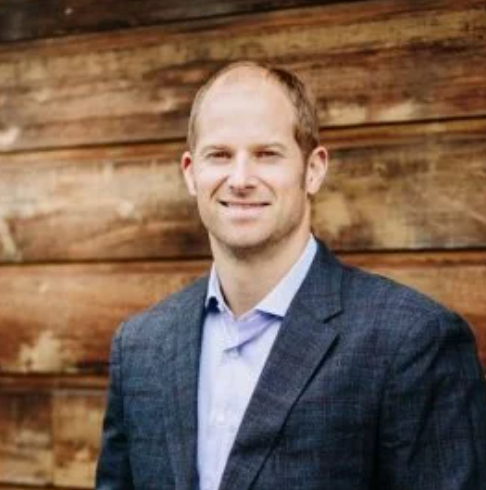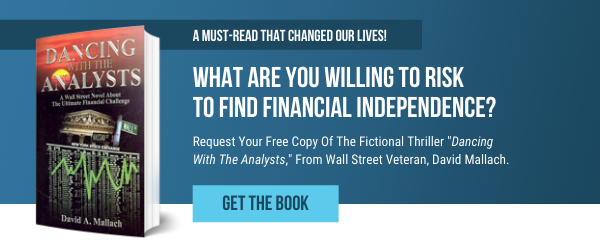Recently, our family got bikes. From that day forward — whether it was to the gym in the morning or dropping off my kids at school — I’ve been spending every moment I can riding my bike.
One of the most relaxing things to do is to ride with no hands, just cruising, pedaling, coasting, and letting go. I don’t even think about it when I let go; it’s second nature to me. You know that old cliché: you never forget how to ride a bike? Lots of kids learn to ride hands-free, and you just don’t forget it.
I started thinking about, well, how do I do it? It reminds me of the street performer who juggles on a unicycle, no less. How do they do it? If you watch them closely, you’ll notice their feet and how they are moving their body. It’s constant motion, not a moment of stillness. They’ll lean over to one side, and then correct to the other side. The movements, while continuous, are tiny, tiny little inputs, not large, swinging movements. Just little ones. They’ll go back and forth, back and forth, almost like a wiggle.
Market Uncertainty and Flying a Helicopter
Many people who know me also know that my dad served as a helicopter pilot. I’ve always wanted to give it a try, and last year I finally signed up for helicopter school at Norwood Municipal Airport. I have some hours under my belt by now, but the first few times were particularly memorable for reasons I’ll explain.
The first time they take you up in the helicopter, it’s to see if you can just deal with flying around. If it’s something you can handle, then you enroll to take lessons. Well, one of my misconceptions was that flying a helicopter is difficult. While there are certain aspects of it that are difficult, overall, it’s not difficult.
You must manage three main controls. First is the cyclic, which looks like a joystick, which basically allows you to steer. Then there’s the collective, below your left-hand side, which raises the helicopter up and down. You always have your hand on the collective, as it also serves as the throttle. And then you have the foot pedals, which control the tail rotor and prevent the helicopter from oscillating out of control.
What Makes for a Disciplined Investor?
When I think of investment discipline and market uncertainty, the image comes to me of flying that helicopter and how similar it is to that. Since flying is new to me, you’d think that it would take a while for the instructor to ease me into it. No. They give you the controls pretty early on, and before you know it, you’re flying straight ahead. That part is not difficult. What does tend to become a big deal — for new pilots, at least — is how to hover in place. Hovering in place means not moving forward or backward, left or right. You’re taking in the scope of the situation and evaluating.
The few hours I spent hovering were absolutely wild. The first time for me was when we flew from Norwood down to Plymouth, along the coast: a really nice ride. We went over Gillette stadium, and then to an airport where we approached a grassy field. The instructor brought the helicopter to a stop in midair, hovering probably about 20 or 30 feet off the ground, then one by one, he gave me the controls.
Once you get the feel of a situation, you should be able to take control. At least, that’s the way I used to think.
Learn To Invest in ‘Good’ & ‘Bad’ Markets
When my flight instructor handed me the controls, first, he gave me the cyclic (the steering), and said, “Okay, I want you to look way ahead of you, and then I want you to keep the helicopter level and stable and that's it.” He handed over the controls to me (while he was controlling the others), and within five seconds the helicopter was oscillating wildly.
The erratic movement felt like the pirate ship at the amusement park, and I’m thinking, “Oh my goodness am I going to make it?” “You take the controls,” I yelled at him, as I prayed for him to take over NOW.
Time and time again, he handed me the controls. What I was doing when he handed them over and what I thought I was doing – these were two different things. In the beginning, when the helicopter would start to rock and roll, I would try to compensate and would consequently throw it in the other direction. Hence the pirate ship effect. Eventually, I got the hang of it. Little inputs go a seriously long way. By making minute adjustments I was able to manage the situation much, much better.
The same can be said for long-term investing even when market volatility has you frazzled, remember: “Little inputs go a long way.”
Anticipate the Unexpected
What I learned over time, as he eventually handed all three controls to me – the cyclic, the collective, and both foot pedals – is that you’re never really holding any of the controls very tightly. You are constantly and consistently providing the tiniest of inputs in a direction where you are anticipating the helicopter to move. You are not reacting to the movements of the helicopter; you are anticipating them.
Same thing with riding a bike with no hands. If you get on your bike and start pedaling with no hands, especially if you haven't done it in a while, you're going to shift your weight, possibly abruptly, to one side or the other. Do you swing your body in the opposite direction to right yourself? If you’re out of practice, you may overcompensate.
If you swing and can't control yourself, you may fall. But if you constantly and consistently shift your body to adjust to the terrain, moving almost undetectably, you won’t feel like you’re falling, you will indeed go straight. This applies similarly to the hovering helicopter. You need to anticipate that the wind is going to blow and move the helicopter, a little bit or a lot. As you adjust the cyclic with tiny little movements back and forth, you gain control over your situation.
Why Market Uncertainty Is an Inevitable Part of Investing
Being the financial geek that I am, I couldn't help but see a strong analogy to the financial markets. The true investor does not approach their portfolio by waiting around for something unexpected to happen, only to swing their portfolio wildly in the other direction to compensate for what just happened.
A true investor understands that there will be some sort of stimulus, an incoming movement. What kind of stimulus, specifically, is unknown. A true investor is constantly and consistently making the littlest of adjustments; they’re understanding and expecting things to happen versus waiting for a “bad market” and reacting strongly to it.
As true investors, we know that strong winds come about; we just don’t know when. But we do know that when they come, we can maintain much better control over our portfolio if we make the tiniest of movements, not big ones.
At the onset of the pandemic, one client wrote me an email to say, “Hey, Ben, my portfolio is down over a million dollars in less than a month — what are you going to do about it?” I didn’t react to his letter because I know him, and I knew it wasn’t accusatory, it was simply coming from a place of emotion.
I did respond, however. In fact, what I was “doing” about it, was making small adjustments not because of the pandemic, but rather from the day that we onboarded him as a client. Little did he know (actually he did know, but probably couldn’t remember) that we were preparing for windy days from the very start. And what we were going to “do” in the pandemic was exactly that: we were not going to be reactive, we were simply going to continue making tiny adjustments, because market uncertainty isn’t going away… but we can be ready for volatility.
Knowing When To Buy, When To Sell
A common misconception is that true investing requires keeping tabs on the market and reacting. It's not that at all. It’s more about having an understanding that what we face in the future is unknown and unknowable.
We must have an investment strategy in place where we're always light on our feet. We're always making slight adjustments along the way, in good markets and bad markets. If you have a process as we do for making small inputs, then you can continuously perfect your craft. At Beck Bode, our “small inputs” are earnings estimate revisions, which give us insight into when to buy, when to sell, and where to reinvest the proceeds.
We execute this principle all the time, and what it allows us to do is eliminate the noise. The noise is the impulse – market volatility, fear and anxiety, the media, what your neighbor is doing, what your boss said, etc. That noise could potentially cause you to grab the controls and overcompensate.
Investing Takes Practice
Of course, it takes practice, just like riding with no hands or flying a helicopter. At first, you feel wildly out of balance, you panic, and you pray for someone to take over the controls. As you continue to practice, maybe you’re rattled a bit, but you’re teaching yourself not to get thrown off by the potholes and the bumps.
Eventually, you reach a state of balance and relaxation that allows you to keep going — you could almost call it a kind of flow — and it becomes second nature. It’s when everything slows down. Top athletes talk about this all the time, how when they are in that peak state, everything appears in slow motion.
Investing is not much different from any other discipline or sport. Staying in the game takes practice and making tiny adjustments with an eye to the long-term, is what separates the professionals from the rest. Once you get the hang of it, you can do it effortlessly, regardless of wind or weather. Just like flying a helicopter.
If you’re ready to make your money work for you, schedule a discovery call today.
--
Ben Beck is Managing Partner & Chief Investment Officer at Beck Bode, a deliberately different wealth management firm with a unique view on investing, business and life.

 Benjamin Beck, CFP®
Benjamin Beck, CFP®